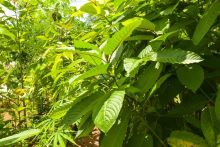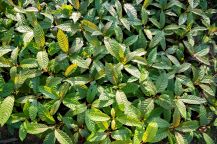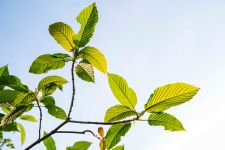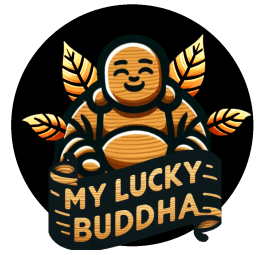Unveiling the Mystery of this Traditional Herb
Kratom, or Mitragyna speciosa, is a natural substance that has piqued the curiosity of many due to its distinctive properties. Originating from the lush forests of Southeast Asia, this tropical evergreen tree has been used for centuries by locals seeking a boost in energy. Just like your morning coffee helps kickstart your day, kratom has traditionally been used in similar fashions, embodying a natural assist to cope with the demands of daily life.
Kratom Uses in the Modern West
Fast forward to today, and you’ll find kratom’s leaves making waves far beyond their native borders. As a botanical, these leaves are either chewed, dried and brewed into tea, or processed into capsules, powders, and liquids. The allure? For some, it’s the potential of increased energy or perhaps mood improvement. Yet, as kratom’s journey extends from traditional use to a modern shelf, controversy and debate follow closely. It’s important to navigate these waters with a clear understanding, given the mixed views on its safety and efficacy.
Key Takeaways
- Kratom is a natural substance, from the tree Mitragyna speciosa, used traditionally in Southeast Asia.
- It has gained popularity in Western countries as a potential source for natural energy, mood enhancement, and relief.
- The safety and legality of kratom are under debate, with varied opinions on its benefits and potential risks.
History of Kratom
This potent botanical native to Southeast Asia, piqued global interest for its unique effects resembling both relaxant and stimulants. You might find fascinating how this leaf has woven itself into the fabric of traditional medicine and faced contrasting perspectives on its legality.
How to Pronounce Kratom
If you’re new to this plant, you might be wondering how to pronounce kratom. There are two common ways to say it, depending on regional preferences. Some people pronounce kratom as “KRAY-tom,” where the first syllable rhymes with “day.”
Others say “KRAH-tom,” with the first syllable sounding like “car.” Both pronunciations are widely accepted, and you may hear both depending on where you’re located.
Understanding how to pronounce kratom correctly helps you engage confidently in conversations, whether you’re discussing it with other enthusiasts or learning more about the plant’s origins. Regardless of pronunciation, kratom continues to gain popularity due to its unique properties and diverse strains.
Legality and Regulations
In several Southeast Asian nations, including Thailand and Malaysia, despite its indigenous roots, Kratom faced bans due to its psychoactive properties and potential for misuse. The leaves have traditionally been chewed or brewed into tea by locals, but governments wrestled with its euphoric like effects and potential for dependency.
Moving westward to the United States, Kratom is a bit of a regulatory dance. It’s not regulated under the Controlled Substances Act, meaning it’s not illegal at a federal level, yet. However, the Drug Enforcement Administration (DEA) has had its eye on Kratom, and the U.S. Food and Drug Administration (FDA) hasn’t approved it for any medical use. They’ve issued warnings regarding its safety profile, and some U.S. states have independently decided to ban or regulate the sale of Kratom.
Remember, the legal status of this botanical is always evolving, so it’s crucial to stay updated with the latest legislation.
Botanical Information
Did you know that Mitragyna speciosa, commonly known as kratom, is part of the coffee family? This tropical evergreen tree flourishes in Southeast Asia’s verdant landscapes. It’s more than just a plant; it’s a centuries-old companion to the local cultures, revered for both its traditional uses and intriguing properties.
Species and Strains
Kratom isn’t one-size-fits-all. Various strains adapt to unique environments in Southeast Asia. They often take their names from their native regions, like Malay from Malaysia, or from their distinct effects, such as Maeng Da, known for its potency.
Growing Regions
Kratom thrives in the humid, tropical climates of Thailand, Malaysia, and Indonesia. These regions are the true home of this remarkable plant.
Skilled farmers in these areas have honed their craft over generations. They know precisely when to harvest the kratom leaves to ensure the highest potency and quality.
The unique environment of these countries creates ideal conditions for kratom to flourish. This results in leaves rich in the natural properties that enthusiasts seek.
What does a Kratom Tree Look Like?



The tropical evergreen tree, known as Mitragyna Speciosa, can reach a towering height of 80 feet! It’s recognized by its broad, glossy leaves that can grow up to 8 inches long. These oval-shaped leaves have pointed tips and prominent veins that display red, green, or white hues, depending on the strain. The tree’s bark is smooth with a light gray color. Notably, the leaves have a waxy texture, helping them repel water in their humid native habitat. The veins contribute to the leaf’s color and also indicate the alkaloid content, which determines the plant’s effects and benefits when consumed. Finally, the tree is supported by a robust root system that extends deep and wide into the soil.
Chemical Composition
Kratom, the plant you’ve likely heard about, packs its punch through a diverse chemical repertoire. When we peek into its leafy greens, we find a trove of alkaloids, the most notable being mitragynine and 7-hydroxymitragynine. Let’s get down to the nitty-gritty details and understand what’s really going on when kratom comes into play.
How It Works : Unlocking Kratoms Effects
Have you ever wondered what’s behind kratom’s effects? At its core, mitragynine acts on your opioid receptors, producing both a euphoric like relaxation and a boost in your mood.
Potency Considerations
Potency in kratom depends largely on dosage and alkaloid profiles. Like fine wines, kratom leaves vary based on factors such as plant age and environmental conditions, affecting concentrations of mitragynine and other alkaloids. Even small changes in dosage can significantly impact the experience.
Interactions and Risks
Kratom can interact unpredictably with other medications, particularly opioids or similar drugs, leading to potentially harmful effects. It’s crucial to consult your doctor before using kratom, especially if you’re already taking medications that could result in dangerous interactions. Prioritizing your health and staying informed will help you avoid unnecessary risks.
Disclaimer: This product is not intended to diagnose, treat, cure or prevent any disease or condition. Not intended for use by pregnant or nursing women.Not to be used by anyone on prescription medication or alcohol. These products should not be used by anyone with medical conditions. Not for sale to anyone under age 18 or 21 where applicable. Kratom use may lead to addiction that can cause dependency issues. Please speak to a physician before using kratom, kava or any botanical products. The FDA has not approved kratom or kava as a dietary supplement. These statements have not been evaluated by the United States Food and Drug Administration.


